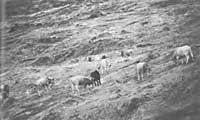Human ecology: how territories constitute society
1989/11/01 Torrontegi, E. Iturria: Elhuyar aldizkaria
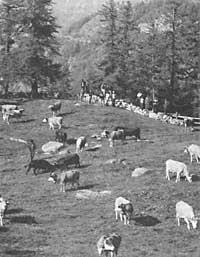
Twenty years ago, Garrett Hardin, a biologist at the University of California, wrote an article titled “The Tragedy of the Commons,” whose reading has become an essential element for all those who care about the environment.
The basic idea of the article was that free access to common resources is a recipe for the deterioration of the environment, endangering the future welfare of humanity.
But it seems that Hardin's idea of this concept does not fit into reality. The “tragedy” referred to can only occur by understanding one’s own resources as an open and free space accessible to anyone.
In origin, the concept commons (and hence the current “commons” or popular land) was defined as a place of responsibility and benefit for all, managed by those who understood that the resources of the environment are limited. Access to it was limited by degree and regulated to ensure that everyone would use it for their own benefit and not to the detriment of others. These commons originally worked to keep the farm within equitable limits, so that each user would have safe food in the short term and ensure the monitoring of resources available to future generations.
Because life is largely based on the intellectual talent of the modern industrial environment, we tend to think that we have an explanation for everything. While basing ourselves on intellectual values and controls works quite well in our system, it can be an obstacle to understanding systems with other priorities. Sometimes the recognition that other systems can work with systems that contradict our priorities can be strange.
Sanburutarrak from Kenya
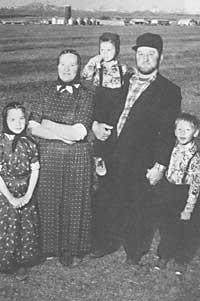
One of these systems would be the population of the Sanburu region, located north of Kenya. The Sanburutarras who were suffering from drought and government and international development agencies condemned their nomadic pastoralism as a primer and destroyer of the environment. According to experts, they needed fewer animals of higher quality, thus changing from the poverty of subsistence to the wealth of the monetary economy.
Milk is Sanburu's main food and the scarcity of vegetation to keep sheep flocks alive and productive, and the scarcity of rain makes an incredible talent needed.
And what a talent! For a moment, there is nothing more to think about how western agriculture produces in the wonderful meadows only cows, while the sanburutarras produce a large amount of milk from an almost deserted land. This is because they know the limitations of the environment and its climate. The possession of different types of animals (camels, sheep, cows and goats), stock sizes and grazing measures are a good way to use affordable resources.
Her marital customs and family structure reflect the need to group together, and her respect for the elderly (for her basic knowledge and experience) has led anthropologist Paul Spencer to describe this society as a gerontocracy.
The way of life of the sanburutarras is the result of giving an energetic and resistant response to the limits of the environment in which they are. There are plenty of sophistication in their land use models and personal interaction. Far from being an incompetent element for aid and development, the Sanburutarras can give some ties to the experts, being the first of them that society and culture configure the circumstances of the environment, of which maintenance results. Despite the great differences of habit and belief, all societies have solutions to face problems and build generations to come. If these societies continue over the centuries, it is because these solutions work. In fact, many of these places have already been picked up by the Sanburutarras and many other groups of people.
In 1930 a new discipline was born around the research of the ecological links between the environment and culture. This research shows that culture is a product of ecological success and therefore plays an important role in human tasks. This discipline has a name and a magazine since 1972: Human Ecology.
Human Ecology
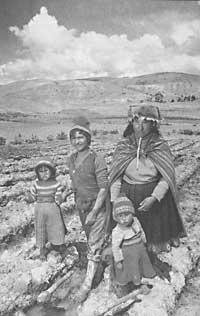
The importance of human ecology is demonstrated in studies that indicate the function of seemingly rare cultural phenomena.
A classic example is Marvin Harris' study of holy cows in India. The term “Holy Cows” comes from the Hindu tradition and assigns to the cow the status that must always be honored (and never finished).
In the image there are more than 200 million cows and their biomass is greater than that of the population of India. It is the largest concentration of beef in the world. This type of livestock population increases soil pressure and the resource of a poorly fed population.
British colonial administrators regarded the holy cow as the last absurdity of ritual traditions and customs, a tradition that was hindered in efforts to offer India a European civilization.
Several studies before and after independence have reached the same conclusion, attributing the phenomenon of the holy cow to the “irrational ideology” of religious belief.
But Marvin Harris approached the problem from a functional point of view and ended up saying that the holy cow was not so irrational.
Harris believes that cultures that remain for a long time are built in response to concrete ecological pressure and only survive because of their functionality. Harris does not deny that the holy cow of India and the livestock system can be improved. He says that the attitude of the Hindus towards the cow should be a reflection of the symbiotic relationship between the person and the cattle and not of the competitive situation between the two.
At present, the proportion between cattle and man is a consequence of ecological circumstances and not of Hindu ideology. Circumstances could change, but any evolution that expels the cow from the territory would be no choice but to move many families to already overpopulated cities.
The functional approach of human ecology can help to understand the ecological environment in which a certain culture is located.
The ecological differences that India, Africa, China have… are the explanation of the different cultural practices and social systems that people have invented in these countries.
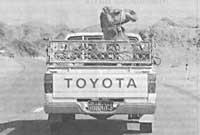
Human ecology can explain all relevant aspects of human culture: lifestyle, social organization, housing model, marriage, child education, inheritance, government and religious belief. The differences between cultures regarding these aspects refer to different ecological parameters. Ecology and differences will also be understandable.
In academic literature we have many tests on the ability to control and regulate our relationship with the environment, but we do not issue them. It would deserve a better knowledge of the logics that human culture carries in relation to the environment. It is essential to say that the social structure of many human groups is based on a close relationship between private and common property, as shown in the study of the small Swiss village Törbel.
“No one can send more cows than they can have in winter to the Alps,” explains a document written by the locals in 1517. This standard contrasts what Hardin said at the beginning of the article, linking the use of communal land to private land and the amount of grass they will produce in winter to feed animals. Thus, no one could exploit communal land without influencing their personal cost for their own benefit.




